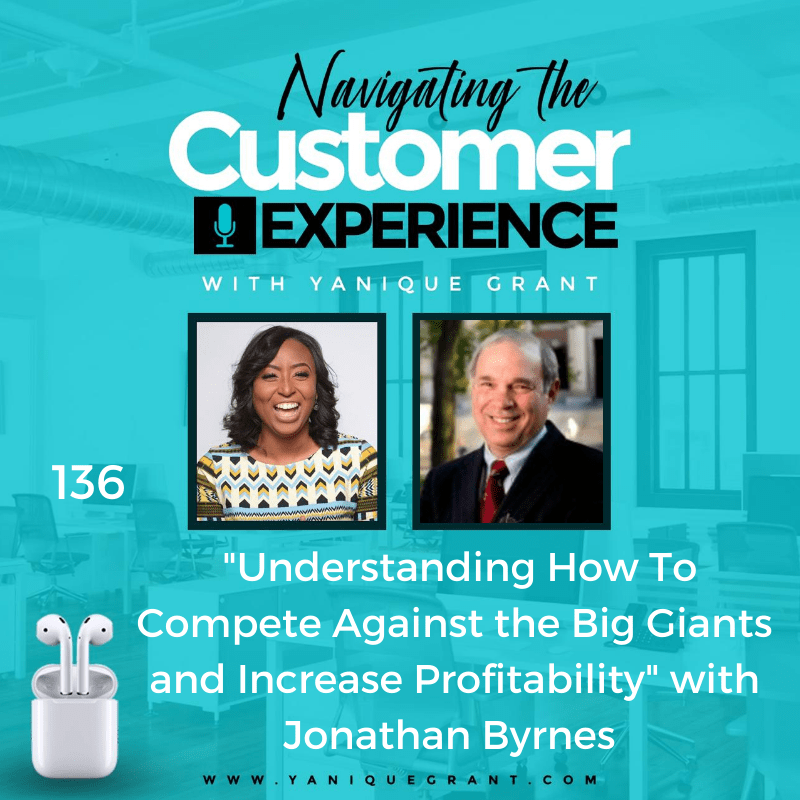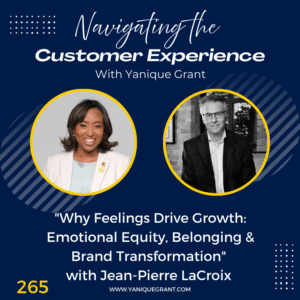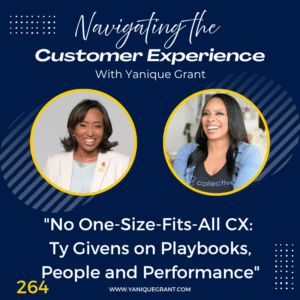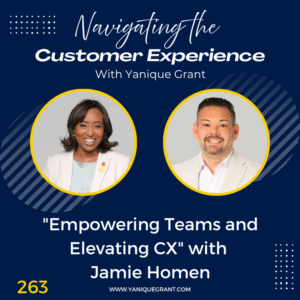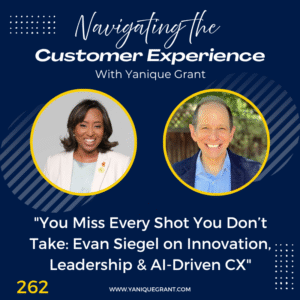Jonathan Byrnes is a founding partner and chairman of Profit Isle, a highly successful MIT spin-off SaaS software company that helps organizations increase profits by 10 – 30 percent using its profitability analytics and management process. A widely followed thought leader on profitable growth and innovative customer supplier relationships, Byrnes is a frequent speaker and writer who has advised over 100 companies and institutions. He earned a doctorate from Harvard and has been a Senior Lecturer at MIT for 30 years. In addition to his popular HBS column, “The Bottom Line,” he is the author of Islands of Profit in a Sea of Red Ink, an Inc. Best Book for Business Owners.
Questions
- Could you start off by telling us a little bit about your journey?
- Can you share with us maybe one or two things that you may have touched on in your book, what are some things that based on your research and your experience that potential readers could look forward to if they should purchase this book that will help them to be able to navigate best through their customer experience, especially during this time that world is going through a global pandemic?
- Could you share with us what’s the one online resource, tool, website or app that you absolutely can’t live without in your business?
- Could you share with us maybe one or two books that have had the biggest impact on you? It could have been a book that you read many years ago, or even a book you read recently, but it really has had a great impact on you.
- What’s one thing that’s going on in your life right now that you’re really excited about? It could be something that you’re working on to develop yourself or your people.
- Where can listeners find you online?
- Do you have a quote or a saying that during times of adversity or challenge, you will tend to revert to this chord? It kind of helps to get you back on track or to get you refocused. Do you have one of those?
Highlights
Jonathan’s Journey
Jonathan shared that he went to business school and he actually enjoyed academic business quite a lot. He was at Columbia in New York. Instead of taken a typical job on Wall Street or in a consulting company, he decided to get a doctorate. So he got up to Boston, he’s from New England. So he was happy to get back to Boston. And he went to Harvard, spent 6 years there and got a doctorate from Harvard Business School. And after that, he developed a consulting business where he helped a number of companies do very, very innovative things, which he found very satisfying.
After he had achieved a degree of success in consulting, he got very re-interested in academics, so he connected with MIT and they asked him to teach a course there and he has been doing that for 31 years now.
In addition, he continued his consulting business, but he shifted it over. When he was doing consulting, he was very unhappy with the way that profitability was measured in companies, the typical way is to sort of pile up all the revenues and pile up all the costs, and see which one is bigger.
And if revenues are bigger than then costs, you have the profit. And if the opposite, you have a loss. The problem is it tells you whether your profitability, whether you’re profitable, but not where you’re profitable.
And so, he couldn’t really take a part a company and understand where it was making money. So he developed back in the 1980s, a new way to do this, he thought and thought about it and it seemed to him that this is a transaction.
So if he goes into a store and he buys 3 pencils, eraser and a ruler, that’s three transactions. And if he could understand the profit and loss on each of those and he could characterize each one, then he had sort of a good starting point.
And so, they figured out a way to do a profit and loss statement on each of them with probably over 95% accuracy and then each one could be characterized, he knew the customer, he knew the product, he knew the store and so on. So he could put it into the database and figure out exactly where the company was making money and where it wasn’t.
So when he did the first one of these back in around 1987, using very rudimentary computer and database programme, nowhere near what we have now and what he saw was about 10% of the company, this was a very successful company, making 150% of the reported profit. He couldn’t believe it. And then he looked at where the losses were and about 20% of the company, the customers and the products were taking away at least half of that. He was really astonished and then the other half of the company was making no money. And he just couldn’t believe it.
So he brought it back to his colleagues at MIT and said, “This is unbelievable and he doesn’t believe it. But the numbers, he thinks are correct.” And so everybody said, they don’t believe it either and they went through the numbers, and they said, but the numbers are right. And since then, he has done that with over a 100 Billion dollars in client revenues and it always shows the same pattern. So with that understanding, I did two things.
Number one, they took that rudimentary software and over the years made it better and better, so that they’re now running on the Google Cloud with 10s of Billions of Dollars of client revenues every month under analysis and they always see the same thing.
And number two, he recently wrote a book called Choose Your Customer: How to Compete Against the Digital Giants and Thrive, which will come out next week (May 11. 2021), where he talks to companies about how to focus on where they’re making money, and how to integrate in the changes coming up in the environment from competitors like Amazon and others so that they know where they should head, and how to choose the right customers, align their resources and structure and manage the company, so that they can win in this new environment. Because if they go on with what used to be the success factor, which was having a lot of revenues that were a mishmash of everything to everybody, when highly focused competitors like Amazon are coming in, they’re going to lose their shirts.
And in fact, that’s the reason why so many companies have gone bankrupt, frankly in the past, 3, 4 or 5 years, because they couldn’t adapt, they kept trying to be what they used to be 20, 30 years ago in the face of these much more focused competitors.
And he’s really here to say that by doing the right thing, even in the presence of Amazon, especially in the presence of Amazon, you can make a fortune but you have to figure out where you want to be and how you’re going to get there. And you have to decide what you want to do and what you don’t want to do. So that’s basically, the long and short and uninteresting story of his life and how he got to where he is.
Tips for the Navigating Customer Experience
Me: I’m so happy that you mentioned in your introduction that you wrote a book that’s going to be released next week (May 11. 2021), Choose Your Customer: How to Compete Against the Digital Giants and Thrive.
So of course, that was one of the things that piqued my interest why I was so intrigued to have you on our show, because as you can tell, we focus on how can we help managers, leaders, business owners in all different types of businesses across the world, navigate through their customer experience.
And so I wanted you to share with us maybe one or two things that you may have touched on in your book, I know it’s not released yet, but you could probably give us a teaser of what are some things that based on your research and your experience that potential readers could look forward to if they should purchase this book that will help them to be able to navigate best through their customer experience, especially during this time that world is going through a global pandemic?
Jonathan stated that he’s going to separate out for the first bit about the pandemic, because that too will pass although he thinks with more difficulty than people think. But over the longer term, a lot of people ask him, “How can I compete with Amazon?”
And his answer is, don’t. And if you try to be like Amazon, Amazon will run you over.
However, what’s really important, and this is really the most important thing is that you can be like Amazon, you can’t compete with Amazon where they are, but you can do what they did.
And what they did is very interesting. In the old days, say in the 1980s or so, you had companies that had a broad range of customers. So the example he would give is that in his hometown of Hartford, Connecticut, they had a big department store called G Fox and everybody went there for everything from shoes, to jackets, to skis, on and on and on. They had everything and they served everybody. The problem is that they focused on the big customers and their expensive products.
So it was easy to recognize and deal with big customers. But they had 1000’s of small customers, especially an industrial distributor, for example and they just didn’t know how to get to them.
When the internet came along, Amazon, Jeff Bezos, and Jeff Wilkie, who’s a former student of theirs (MIT), figured out that using the internet, they could get to customers all over the country. And they could do it actually from one central location in Seattle. And so they started doing this with books and then moved into some other products. And they figured out that they could look at the order patterns of customers and figure out who they are and then serve them the sort of products that they thought they’d like. So when he goes on to Amazon, it says, “Hi, Jonathan, here’s what you ordered. And if you like that sort of thing, here are 5 books you might like.” And they’re usually right.
So they were able to use the customer information to target the market and to break up this sort of monolithic, homogeneous market that G Fox used to serve. But Amazon only does one thing well, same thing with Google, Apple and all the rest of them. And that is they have arm’s length services to small customers in a very smart, information rich, highly automated way.
So they took the customers that nobody wanted back in 20 years ago and they figured out how to make a science out of making them happy. And that’s what Amazon did.
And he thinks anybody who tries to do that in competition with Amazon, unless they’re Walmart, they’re going to have a real problem.
However, that leaves a wide open playing field for other companies to do things that are more specialized and customized, typically somewhat higher service, he’ll give you two examples.
Number one, imagine that you’re a small shoe store in his hometown of Lexington, Massachusetts, just outside of Boston. They have Michaelson shoes, they would have trouble competing generally, but they became expert at working with marathon athletes, they have a lot of athletes in that area, fitting the shoes and giving them just what they needed and those people will never go to Amazon because they need some special attention. So that’s a little local in town corner store that’s competing as Amazon did, it figured out three things.
Number one, who are my customers, they chose the customers. Number two, they align their resources, all their information, all their advertising, to go after those customers and not be distracted by everybody else. And number three, they manage actually, at this point, a chain of stores where they’re able to go after individual markets, in some markets it’s swimmers and others it’s runners. And they’re experts and doing incredibly well.
A second area is a great big, enormous area in healthcare that’s just really developing called Telemedicine. And that is that when you’re in your home, you can have sensors on your body and your iPhone can be transmitting information to a doctor saying, What’s your pulse? What’s your this? What’s your that. And it’s sensitive to the point where they can actually diagnose schizophrenia from a distance in your home, and they can treat you in your home. So if you have let’s say kidney stones, there’s a small ultrasonic because this ultrasound unit that you can put in your home and press against your stomach, it’ll break up your kidney stones.
And so more and more medicine is being transferred from the hospital to the home. And the other companion thing is called wellness management on something like what weight watchers does, but as an example, he did a session in Florida, this may hit close to home for you in Jamaica. So he did a session in Fort Myers, Florida for hospital CEOs and the head of the Mayo Clinic in Naples, Florida that’s down in the south west port gave the companion talk and he said that they’re biggest health problem in South Florida is little kids drowning, because everybody has a backyard pool. And number one thing they can do for community health, is to teach the little kids drown proofing, not swimming, but get to the side and get out. And that’s more important than all the heart attacks and strokes in South Florida combined in terms of health outcomes.
So moving into that, he has a former student who just became president of a company that makes what are called infusion pumps. So if you need chemotherapy or pain medication, it’ll drip the right amount into your body. And they are very software dependent because the amount that you drip is a function of how sick you are and how your body is responding, it’s very complicated, but they have units that can be run to the home, and in the home.
And they’ve grown to about $100 Million Dollars self-funded in about 5 or 6 years. So there are tremendous opportunities if number one, you know your market and it’s defensible. And number two, align your resource not to get distracted. And number three, manage the business so that you have what he’s called pounds per square inch of market power.
And it really means doing what Amazon did, which is figuring out a good place to be and sticking to your knitting. Think about great companies of our era.
Think about Walmart, think about Federal Express, Southwest Airlines think about JetBlue, they all did the same thing. They figured out who they were and they stuck with it and they just made it better and better and better.
Of course, you have to be a little bit careful because you’re aiming in 5 years may not be as lucrative as it once was, there may be product developments and other sorts of things but you can factor that into your decision. So for him, that’s the most important key to success. And companies that have tried to be everything to everybody and they can’t turn down the $1 in revenues that doesn’t fit, they’re the ones who are going to have trouble.
App, Website or Tool that Jonathan Absolutely Can’t Live Without in His Business
When asked about an online resource that he cannot live without in his business, Jonathan stated that that’s a little hard because they write all their own software. He’d say modestly, go to www.chooseyourcustomer.com and that’s their book website and you have an introduction and a sample chapter that explain how to do what he just described. So that’s the number one, he thinks beyond that, he reads the New York Times, the Washington Posts and the Boston Globe for sports about eight times a day. That’s about it.
Books That Have Had the Greatest Impact on Jonathan
When asked about books that have had the biggest impact, Jonathan stated that that one is easy. Probably the most important one he has read is called Stumbling on Happiness by Daniel Gilbert, he’s a Professor of Social Psychology at Harvard.
And when his younger son was at Harvard, he took his course that the students called Happiness 101. And he actually does a study of all the studies of what makes people happy. And that sounds like a crazy thing to do but it’s really, really fascinating.
So, he has spoken in front of a variety of groups, and one group he speaks in front of nearly about once every year or two cancer patients, for family reasons. And what he says to them is that in this book, one of the studies that he’s really cites is a study that says that if something really bad happens to you, you have a terrible car accident, you lose a relative, just imagine the worst things that you could imagine, you become quadriplegic, then you think the world’s coming to an end.
Within three or four months, you’re back to your base level of happiness. And that really is powerful, because it sort of says that everybody goes through episodes and they get all down about it as they should. But then, you basically can say one foot in front of the other, and I’m going through the valley of the shadow of death, but I will climb out of it. And I will be as happy as I ever have been.
And he thinks that for him, that’s a very, very important and affirming thing to think about. And everybody, especially in this pandemic, has things that are very difficult and consuming and concerning but you will get over it.
The other one that he always goes back to and reread at least once a year, he’s done this since he was in graduate school, is a book called The Structure of Scientific Revolutions by Thomas Kuhn, who was an Institute Professor at MIT, it’s the Historian of Science and he looked at the scientific method, basically, which says, you do an experiment, you get a result, you do an experiment, you get a result and that’s how you develop knowledge.
And when he looked at some really important leaps forward in science, he said, “That’s not the way it works at all.”In fact, what happens is what he called a paradigm, which is an explanatory model of how a particular part of science works, whether the sun rotates around the Earth or the Earth rotates around the sun or any scientific area. And there’s a way that people think about it and if you come up with evidence that says that that’s wrong, you don’t throw it out, you ignore the evidence and you keep going as if it never happened. And what counts as good science is stuff that moves that basic idea forward.
And then every once in a while you have so much evidence, people still don’t change but somebody will come up with a new theory that explains all the old results and explains all of these so called anomalies and then the paradigm flips but it doesn’t happen all at once. People who are older embedded in the paradigm won’t change, it’s like wondering in the desert for 40 years and sooner or later it changes, and then you get the same progression.
So it’s almost like step by step climbing a ladder and what’s really important about that is that that’s the way the businesses change, that’s the way that people think about things.
So if you have a business that’s operating in a certain way, as he described before, you have a company that’s selling everything to everybody, especially if they’ve been successful, you can’t just show them evidence that they’re losing money here and there, they’re going to keep trying to do it.
And that’s why in a lot of industries, like retail, up to half of all the retailers in the country went bankrupt, because they just couldn’t change. And then you have Amazon, a brand new company coming in and eating their lunch. He thinks that those are the two books that meant the most to me.
What Jonathan is Really Excited About Now!
When asked about asked about something that he’s really excited about, Jonathan shared that bringing the book out. The difficulty of this book is that it’s paradigm changing. In the Kuhn sense, is basically saying, if you try to do business in the old way and that’s the way the business is taught in most business schools to this day, in marketing, you want to maximize revenues. Well, wrong.
Half of those revenues are probably unprofitable. You want to maximize profits, but you need a different way to measure it and a different way to go after customers and a different way to satisfy them.
And the challenge is getting the word out through the teaching and the book, they try to change the way the business is done, so that it’s much more effective and better. As a professional business educator, with a lot of decades of experience, having business work right is the best way to do it.
And by the way for our country and for society at large, if half of all of businesses losing money, that’s an unbelievable waste of resources and we have too many people who are underserved and poor and needy who need those resources. So it’s not only a question of making more money, it’s really a question of getting more good products to more people who really need it.
Where Can We Find Jonathan Online
Website – www.chooseyourcustomer.com
Quote or Saying that During Times of Adversity Jonathan Uses
When asked about a quote or saying that he tends to revert to, Jonathan shared, “One foot in front of the other.” And sooner or later, you’ll go back to your base level of happiness. If you are a happy person, you will get back there, if you’re not a happy person, then you need to work on your happiness. One foot in front of the other until you get there.
Please connect with us on Twitter @navigatingcx and also join our Private Facebook Community – Navigating the Customer Experience and listen to our FB Lives weekly with a new guest
Grab the Freebie on Our Website – TOP 10 Online Business Resources for Small Business Owners
Links
- Choose Your Customer: How to Compete Against the Digital Giants and Thrive by Jonathan Byrnes
- Stumbling on Happiness by Daniel Gilbert
- The Structure of Scientific Revolutions by Thomas Kuhn
The ABC’s of a Fantastic Customer Experience
Do you want to pivot your online customer experience and build loyalty – get a copy of “The ABC’s of a Fantastic Customer Experience.”
The ABC’s of a Fantastic Customer Experience provides 26 easy to follow steps and techniques that helps your business to achieve success and build brand loyalty.
This Guide to Limitless, Happy and Loyal Customers will help you to strengthen your service delivery, enhance your knowledge and appreciation of the customer experience and provide tips and practical strategies that you can start implementing immediately!
This book will develop your customer service skills and sharpen your attention to detail when serving others.
Master your customer experience and develop those knock your socks off techniques that will lead to lifetime customers. Your customers will only want to work with your business and it will be your brand differentiator. It will lead to recruiters to seek you out by providing practical examples on how to deliver a winning customer service experience!

